How to Drill a Straight Hole Without a Drill Press: A Comprehensive Guide
It’s happened to all of us. We need to drill a hole, but we don’t have our drill press handy. Maybe the drill bit is dull and we need to sharpen it. Or maybe we’re working on a project in a tight spot and can’t get the drill press in there. In any case, sometimes you just have to drill a hole without a drill press. It can be done, but it’s not easy. This comprehensive guide will teach you how to do it like a pro!
How to build a Drill Jig for Straight Holes
You’ll need a few supplies to make your own drill jig: a piece of wood at least 18″ long, a dowel or rod that’s slightly smaller in diameter than your drill bit, clamps, and a drill. Once you have everything, follow these steps:
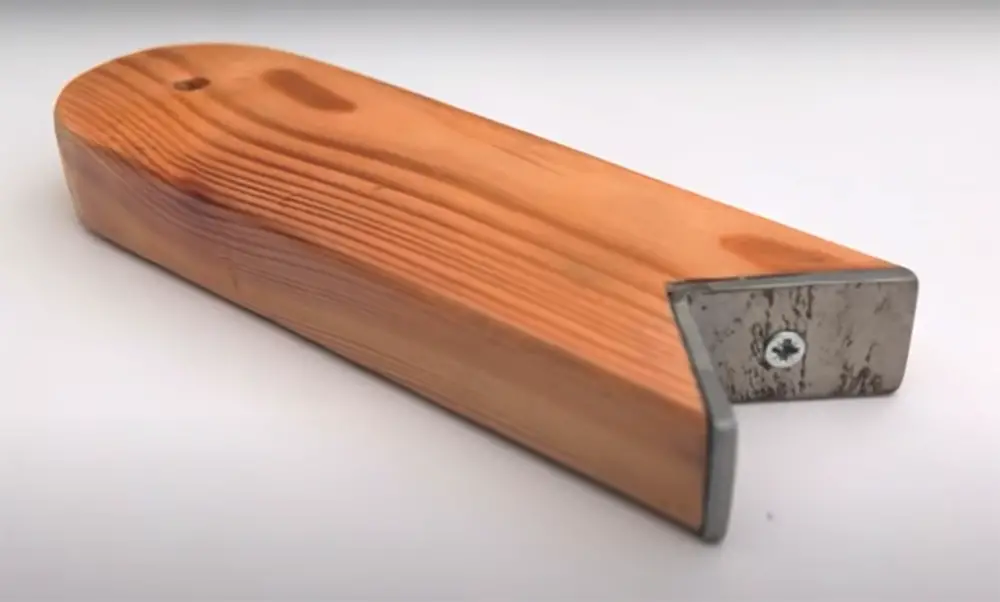
First, mark the center of your board on both ends. Then take your dowel and line it up with the marks, making sure it’s level. Clamp the dowel in place so it doesn’t move.
Now you’re ready to start drilling! Put your drill bit into the chuck (make sure it’s tight!) and position the tip against the end of the dowel. Slowly start drilling while keeping the bit perpendicular to the dowel. As you drill, move the board back and forth so the bit doesn’t overheat in one spot.
Now that you know how to build a drill jig, you can use it to drill straight holes without a drill press! Just follow the steps above and you’ll be on your way to success.
Best Methods to Drill Straight Holes Without a Drill Press
If you don’t have a drill press, or if you’re working on a project that doesn’t require the added precision of a drill press, there are still ways to ensure that your holes are straight. In this article, we’ll show you how to drill a straight hole without a drill press, using both hand-powered and power drills.
With either type of drill, one of the best ways to ensure that your hole is straight is to use a guide. For smaller holes, you can use something as simple as a nail set or an awl to keep your bit from wandering. Larger holes will require something more substantial, like a dowel rod or piece of pipe.
What You’ll Need
To drill a straight hole without a drill press, you’ll need:
- A hand-powered or power drill
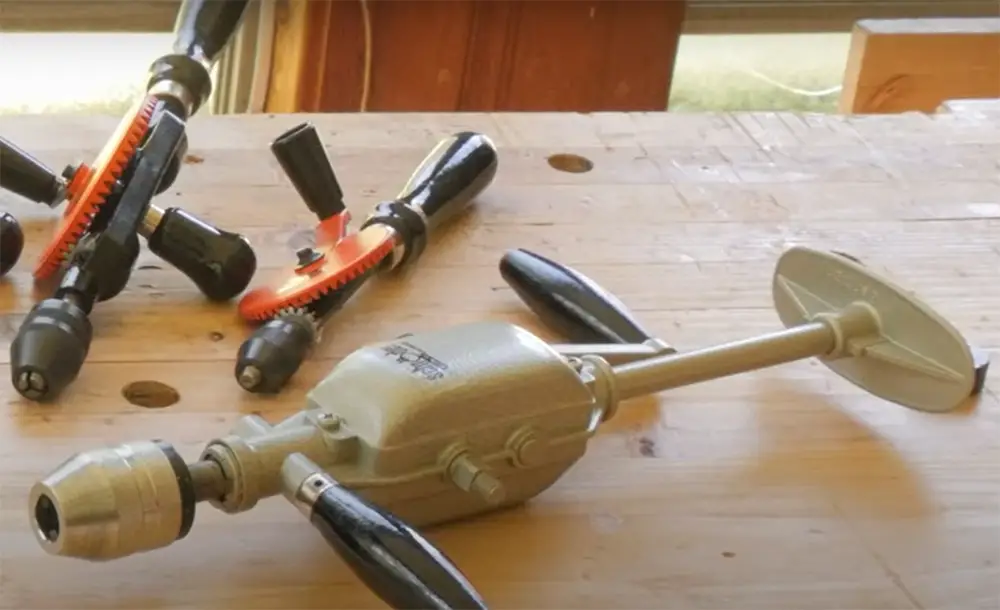
- A guide (nail set, awl, dowel rod, piece of pipe)
- The appropriate drill bit for your project
- A straightedge (ruler or level)
Mark the center of your hole on your workpiece with a pencil. If you’re using a hand-powered drill, rest the point of your guide on this mark. For a power drill, align the edge of your guide with the mark.
Method 1: Handmade Drill Guide
This is the simplest method and only requires a few materials that are probably already lying around your house. All you need is something to act as a guide (a nail set or an awl), a hand drill, and the appropriate drill bit for your project.
Here’s how to do it:
First, find the center of your hole and mark it with a pencil. Next, take your guide and rest the point on this mark. Finally, use a straightedge to draw lines perpendicular to the length of your guide at both ends. These will be your drilling boundaries; they’ll help you keep the tip of your drill bit within the confines of the hole you’re trying to create.
Now you’re ready to start drilling. Apply gentle pressure as you start to drill, and increase the pressure as needed. Remember to keep your tip on the center mark and within the boundaries you’ve drawn.
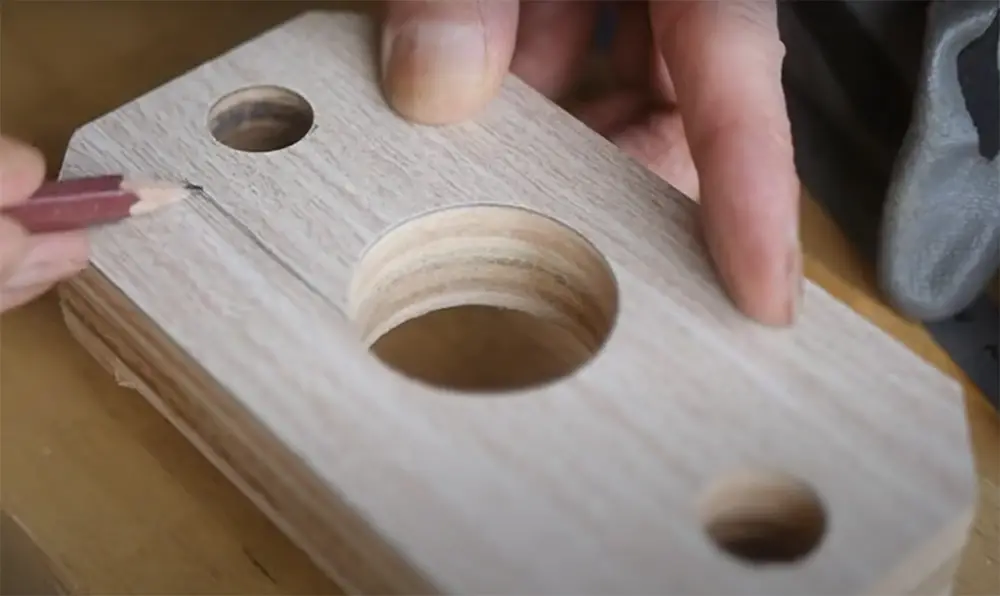
Once you’ve drilled your hole, remove any debris from inside it with a wire brush or piece of sandpaper wrapped around a dowel rod. And that’s it! You’ve successfully drilled a straight hole without a drill press.
Method 2: Drill Bit Guide
This method is similar to the first, but instead of using a nail set or an awl, you’ll use a drill bit. This guide is best for small holes; for larger holes, you’ll want to use a dowel rod or piece of pipe.
It’s time to get started drilling. As you begin to drill, apply gentle pressure at first, and then increase the pressure as needed.
Method 3: Drill Block
If you’re working with a small piece of wood, the drill block method is a great way to get a perfectly straight hole without a drill press. All you need is a piece of scrap wood that’s large enough to clamp your workpiece to, and a drill bit that’s the same diameter as the dowel or rod you’re using.
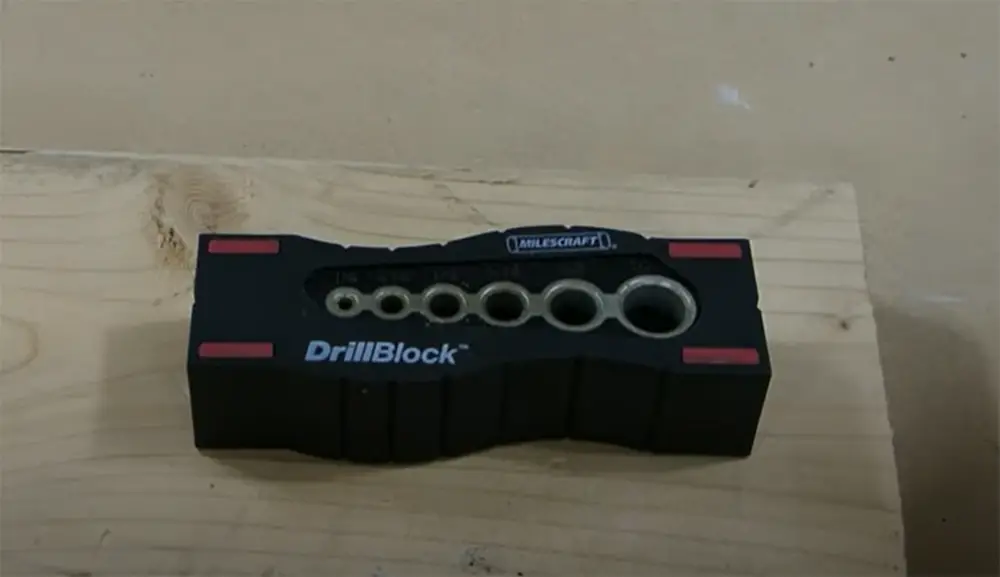
To start, clamp your workpiece to the scrap wood block so that it’s level and secure. Then, use a pencil to mark where you want the hole to be. Next, take your drill bit and make a starter hole at the center of your marked spot. Once the starter hole is made, remove the bit and insert your dowel or rod.
There are a few things to keep in mind when using this method:
- Make sure that your workpiece is level before starting. If it’s not, your hole will be crooked.
- Drill slowly and apply pressure to the dowel or rod as you go. This will help ensure that the hole is straight.
- Use a drill bit that’s the same diameter as the dowel or rod you’re using. This will help prevent the dowel or rod from slipping while you’re drilling.
Method 4: Get Creative
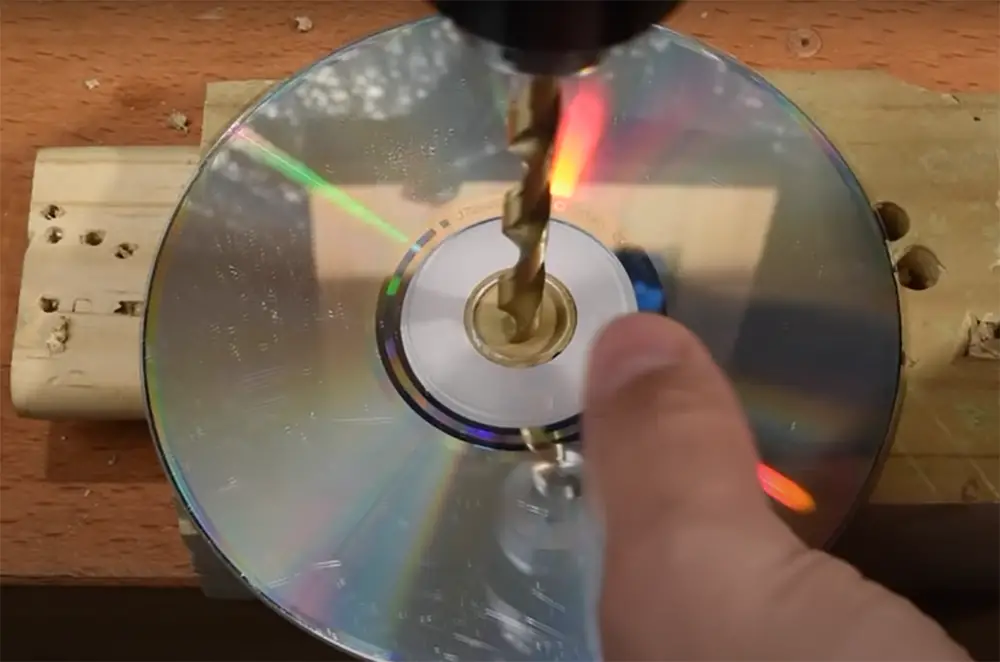
You don’t need a drill press to make straight holes, but you can use one if it’s available. If not, there are plenty of other ways to get the job done. With a little creativity, you can fashion a set-up that will work just as well. All you need is something to keep the drill bit level and steady while you’re drilling. This can be anything from a simple block of wood to a vise mounted on your workbench. Just make sure whatever you use is firmly attached so it doesn’t move around while you’re drilling. [1]
With your set-up in place, simply drill your hole as normal. Take your time and go slowly at first to avoid wander. Once the bit is started, you can increase your speed and apply more pressure if needed.
Mistakes to Avoid, Tips & Tricks
It can be tricky to get started, but once you have the hang of it, drilling a straight hole is easy! Here are some mistakes to avoid, as well as some tips and tricks to help you out:
- Avoid using too much pressure when starting to drill. This can cause the bit to wander off course.
- Use a sharp bit for best results. A dull bit will make it more difficult to stay on track.
- If your drill has an adjustable clutch, use it! This will help prevent the bit from over-rotating and wandering off course.
- Take your time and go slowly at first. You can always speed up once you get going if needed, but it’s much more difficult to slow down if you get ahead of yourself.
- Use a center punch to make a small divot in the surface before starting to drill. This will help keep the bit from slipping.
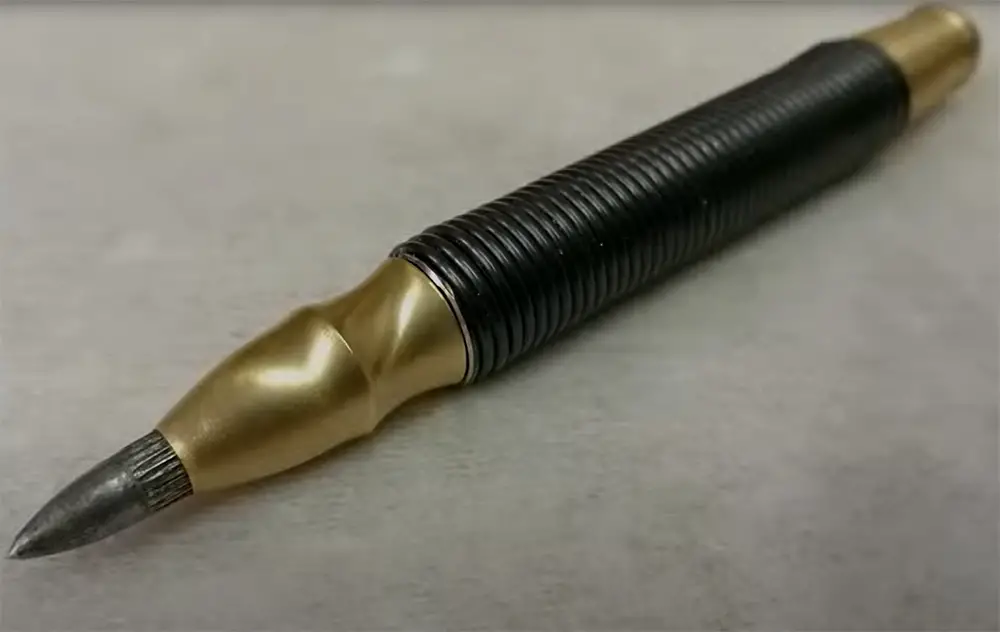
- Use a piece of tape on the drill bit as a depth stop. This will ensure that you don’t accidentally drill too deep and damage whatever is behind the surface you’re working on.
- If your drilling project requires more than one hole, mark out where each one needs to go before starting to drill. This will help you stay on track and avoid any potential disasters!
FAQ
How do you drill a straight hole by hand?
There are a few different ways that you can drill a straight hole by hand. The first way is to use a jig. A jig is basically a guide that you attach to your workpiece and then use to guide your drill bit as you drill.
Another way is to use a doweling jig. A doweling jig is similar to a regular jig, but it’s specifically designed for drilling holes for dowels (hence the name). [2]
The last way is to just freehand it. This method is definitely the most challenging, but it’s also the most rewarding. If you can master freehand drilling, you’ll be able to drill straight holes without any special equipment.
How do you drill long straight holes?
If you need to drill a long, straight hole, there are a few different ways that you can do it. One way is to use a hand drill and another is to use a power drill.
If you’re using a hand drill, you’ll want to make sure that the bit is properly secured in the chuck before starting. You’ll also want to hold the drill as level as possible while drilling. If the bit starts to wander off course, stop and realign it before continuing.
When using a power drill, you have more options for keeping the bit on course. You can either use a guide (such as a dowel or piece of pipe) or you can clamp the workpiece down so that it doesn’t move. If you’re using a guide, make sure that it’s securely attached to the workpiece before starting to drill. [3]
Drilling long, straight holes can be a bit tricky, but with a little practice, you’ll get the hang of it in no time. Just remember to take your time and be careful not to damage the workpiece. With a little patience, you’ll be able to drill perfect holes every time.
How do you drill a perfect vertical?
The first thing you need to do is find a drill bit that is the same width as the dowel you’re using. For example, if you’re using a ¼” dowel, use a ¼” drill bit. It’s important that the drill bit is exactly the same width as the dowel, because if it’s not, the hole will be too big or too small for the dowel and it will be very difficult to get a snug fit.
Once you have your drill bit, clamp your workpiece to your workbench so it won’t move around while you’re drilling. If you don’t have a workbench, you can clamp it to a table or any other flat surface.
Now, take your drill bit and put it in the chuck of your drill. Tighten the chuck so the drill bit doesn’t slip while you’re drilling.
Position the drill bit so it’s perpendicular to the workpiece, and then slowly start drilling into the workpiece.
As you’re drilling, keep the pressure on the drill steady and even. If you apply too much pressure, the drill bit will wander off course; if you don’t apply enough pressure, the hole won’t be straight.
Keep going until the drill bit comes out the other side of the workpiece.
To ensure that the hole is straight, use a drill bit that is the same width as the dowel. Clamp the workpiece to your workbench so it doesn’t move while you’re drilling. Position the drill bit so it’s perpendicular to the workpiece, and then slowly start drilling into the workpiece. As you’re drilling, keep the pressure on the drill steady and even. Keep going until the drill bit comes out of side of the workpiece.
How do you drill through metal without a drill press?
You can use a hand drill, but it’s more difficult to get a perfectly straight hole. If you’re not careful, your drill bit will wander and create an angled or oval-shaped hole.
Here are some tips for drilling a straight hole without a drill press:
- Use a sharp bit. A dull bit will cause your drill to slip and produce an uneven hole.
- Clamp your workpiece down firmly. This will prevent it from moving while you’re drilling.
- Use slow, steady pressure when drilling. Don’t push too hard or the bit will wander off course.
If you follow these tips, you should be able to drill a perfectly straight hole without a drill press.
How do you make a homemade drill press?
You can make a homemade drill press by mounting a power drill on a board or table. The board or table should be secured so that it doesn’t move when you’re drilling. You can also use clamps to secure the drill in place.
Another option is to use a hand held power drill and simply guide it with your other hand as you drill. This method takes some practice but it is possible to get good results. Just be sure to keep the drilling speed slow and steady. [4]
If you don’t have access to a power drill, you can also use a hand held manual crank drill. These are not as powerful as electric drills but they will still get the job done if you’re patient. Again, be sure to keep the drilling speed slow and steady.
When you don’t have a drill press?
Here is a guide on how to drill a straight hole without one.
First, you’ll need to gather a few supplies. You’ll need a power drill, a spade bit that’s slightly wider than the dowel you’re using, some painters’ tape, and of course, the dowel.
Start by taping the dowel to your work surface. Make sure it’s level with the surface. Then, take your spade bit and attach it to your power drill.
Now you’re ready to start drilling! Put the tip of the bit on the surface of the dowel, and start slowly drilling into it. As you drill deeper, increase the speed of the drill.
Keep going until the spade bit has gone all the way through the dowel. You should now have a perfectly straight hole!
There are a few things to keep in mind when drilling without a drill press. First, make sure you’re using a sharp spade bit. A dull bit will cause the dowel to splinter and ruin your project. Second, go slowly at first. It’s easy to get excited and drill too quickly, but this can also cause the dowel to splinter.
And finally, be careful not to drill into your work surface. If you do, you’ll likely damage it beyond repair.
How do you make a Dremel drill press?
To make a Dremel drill press, you’ll need:
- A Dremel tool
- A drill bit
- A piece of wood or metal to act as a drilling surface
- A straightedge or level
- A pencil
Start by attaching the desired drill bit to your Dremel tool. Then, find a flat surface to use as your drilling area – this can be a piece of wood or metal. Place your straightedge or level on the surface, then use it to mark a line where you want your hole to be.
Next, place your Dremel tool on the surface with the tip of the drill bit lined up with the marked line. Hold the tool steady with one hand, and use your other hand to slowly and evenly press the drill bit into the surface. Keep going until the drill bit breaks through the other side of the material. [5]
How do you make a drilling jig?
To make a drilling jig, you’ll need a piece of scrap wood that’s at least as long as the workpiece you’re drilling into. For this example, we’ll use a piece of scrap wood that’s about 12″ long. Cut a slot into the scrap wood that’s wide enough to fit the drill bit you’re using, and then clamp the scrap wood to your workpiece. Drill your hole, and then move the jig along to drill the next hole. Repeat until all of your holes are drilled.
How do you make a cordless drill holder?
You can make a cordless drill holder out of almost anything that will keep the drill stable and allow you to use both hands. A simple way is to take a piece of wood and screw it to the wall or workbench. You can also use C-clamps or other clamps to hold the drill in place.
Another method is to build a jig. This is a more advanced method, but if you have the time and skills, it will give you much more control over your drilling.
How do you make a drill hanger?
You’ll need a few supplies before you get started: a drill, a long screw, two nuts, and a washer. The first step is to take the long screw and thread it through one of the nuts. Then, take your drill and make a hole in the center of the nut. Next, thread the washer onto the screw and then screw on the second nut. Finally, tighten both nuts until they’re snug against each other.
Now that you have your drill hanger made, you can start drilling your holes! If you don’t have a drill press, don’t worry – there are plenty of ways to drill straight holes without one. Here are a few tips:
- Use a hand held power drill instead of an impact driver.
- Use a forstner bit or a spade bit instead of a twist bit.
- If possible, clamp your workpiece down before drilling.
- Start drilling slowly and increase the speed as you go.
- Drill from both sides if possible. [6]
How do you make a PVC drill holder?
You’ll need a few supplies before you get started: a piece of PVC pipe, a hacksaw, some sandpaper, and a drill. Cut the PVC pipe to the length you need with the hacksaw. Sand down the edges of the pipe until they’re smooth. Then, use the drill to make a hole in one end of the pipe. This is where your drill bit will go.
Conclusion
Now that you know how to drill a straight hole without using a drill press, put that knowledge into practice the next time you need to make a hole in something. With a little bit of patience and practice, you should be able to get great results every time. Thanks for reading!
Useful Video: How To Drill A Straight Hole Without A Drill Press
References:
- https://handymansworld.net/drill-straight-holes-without-drill-press/
- https://www.popularmechanics.com/home/how-to-plans/how-to/g1534/3-tips-for-drilling-super-straight-holes/
- https://woodworking.stackexchange.com/questions/3470/how-do-i-put-a-really-long-narrow-straight-hole-in-a-piece-of-wood
- https://www.bobvila.com/articles/how-to-drill-a-straight-hole/
- https://www.instructables.com/Top-5-DIY-Dremel-Drill-Presses/
- https://www.popularmechanics.com/home/tools/how-to/a19471/drill-storage-holsters/






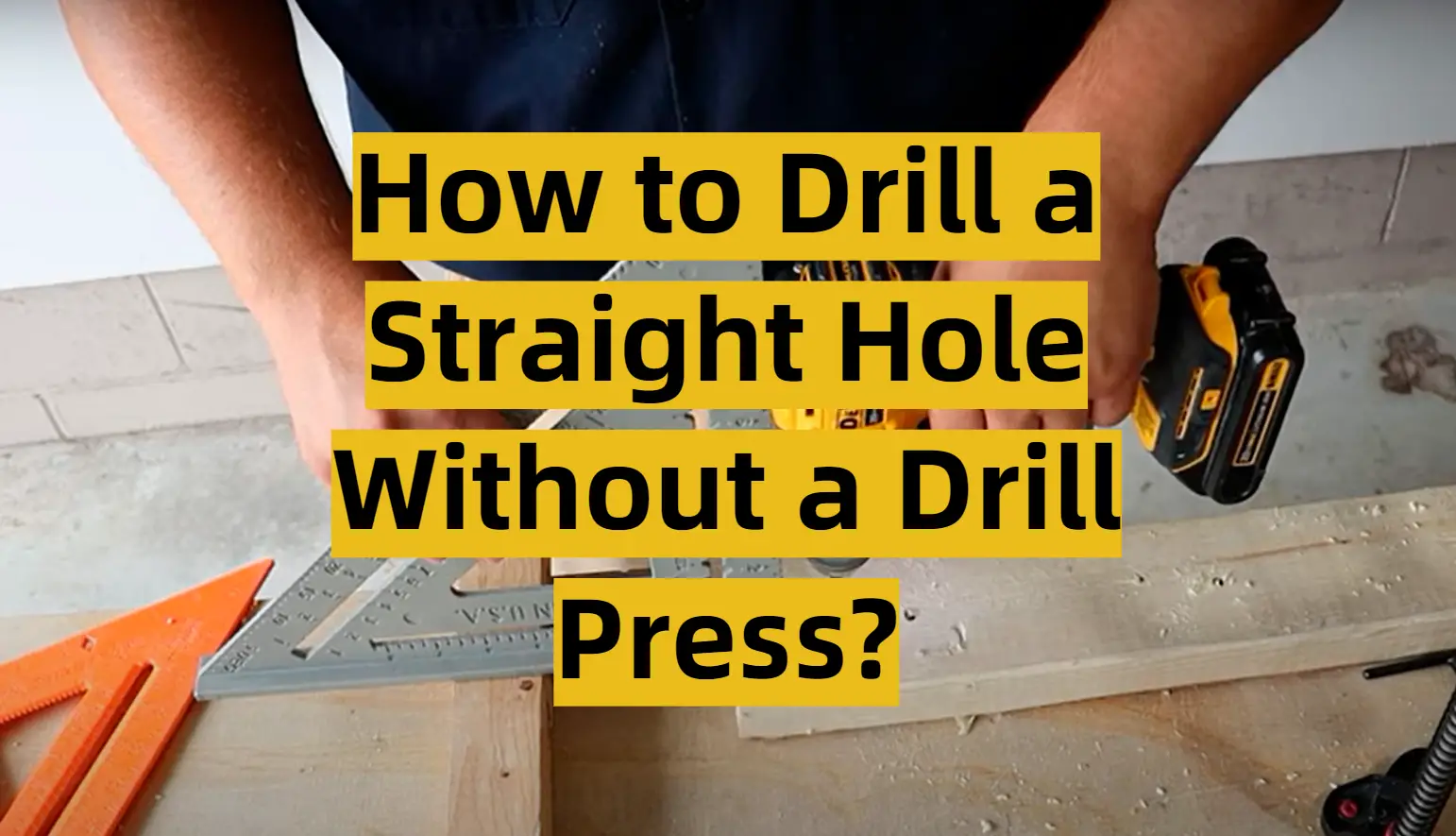




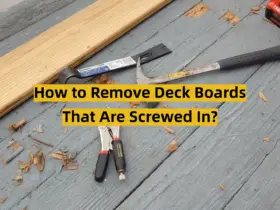
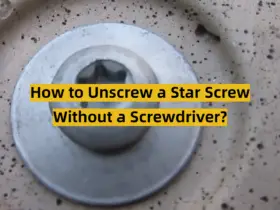
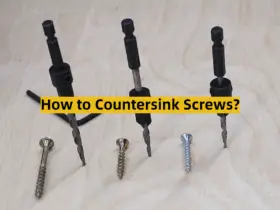
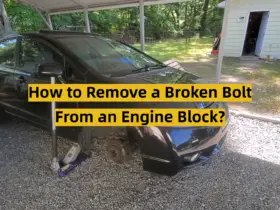
Leave a Reply